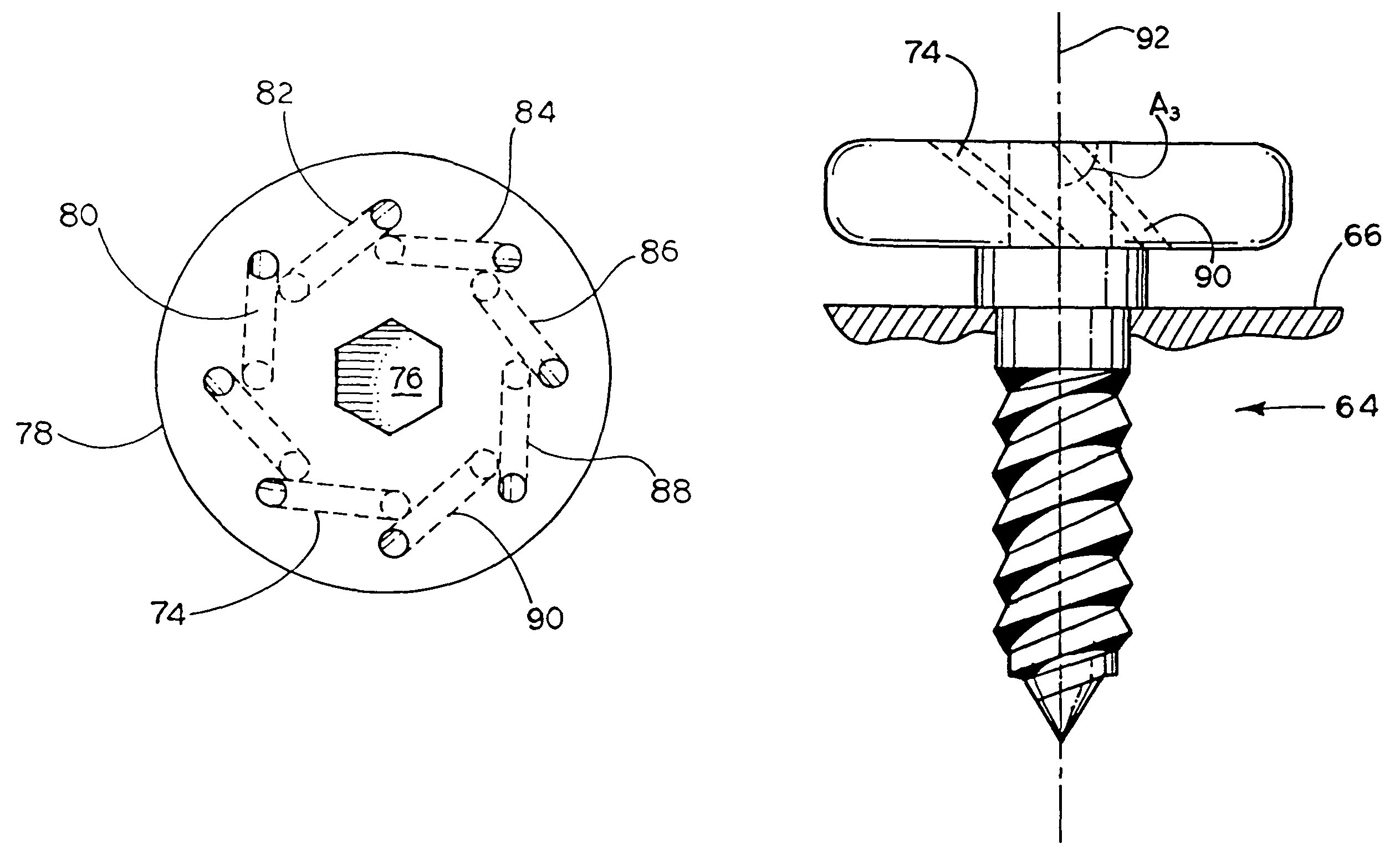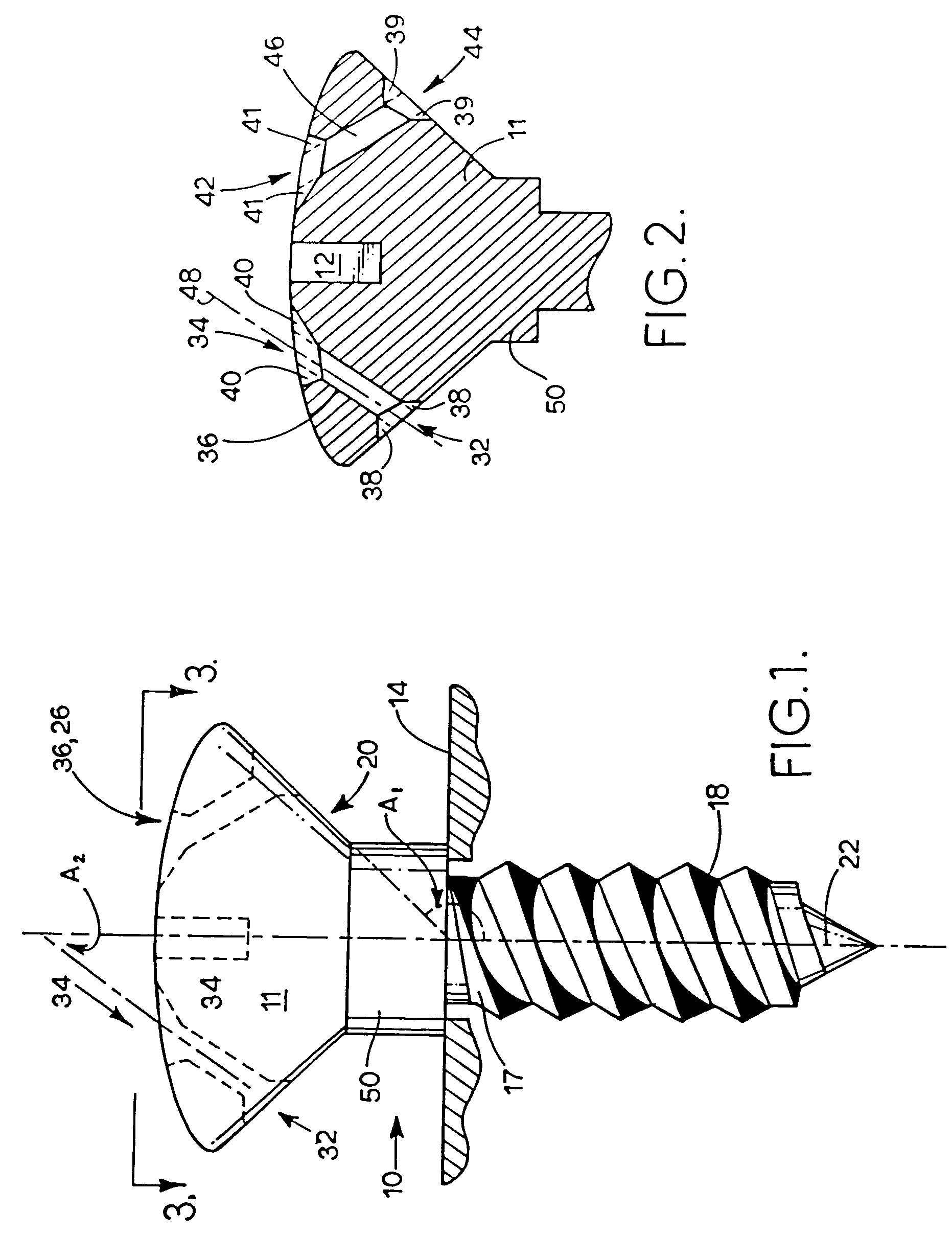Soft tissue securing anchor
a soft tissue and anchoring technology, applied in the field of surgical devices, can solve the problems of inefficient use of patient's operative time as well as surgeon's time, less than optimal use of many operative procedures, and inability to rethread a suture through the suture, so as to reduce the cost of operative time and time, and efficiently attach soft tissue.
- Summary
- Abstract
- Description
- Claims
- Application Information
AI Technical Summary
Benefits of technology
Problems solved by technology
Method used
Image
Examples
Embodiment Construction
)
[0026]Referring to FIG. 1, soft tissue securing anchor 10 includes head 11 and securing end 18. Securing end 18 may include any conventional means of securing a suture anchor into bone such as threads, barbs, fingers, toggle or molly bolts, and rivets. Suture anchor 10 may be secured into bone by any conventional means such as the application of torque or press-fit. The currently preferred embodiment of the present invention is a threaded, self tapping screw having a shoulder 50 which delineates head 11 from shank 17. Shoulder 50 provides a visual and physical indication to the surgeon to stop inserting soft tissue securing anchor 10 when shoulder 50 contacts bone 14. The size of shoulder 50 and the shape of head 11 are selected to permit access by surgical needle to both upper and lower apertures such as upper aperture 34 and lower aperture 32. Raising lower aperture 32 above bone 14 permits easy access to lower aperture 32. Head 11 may include a means for accommodating a drive to...
PUM
 Login to View More
Login to View More Abstract
Description
Claims
Application Information
 Login to View More
Login to View More - R&D
- Intellectual Property
- Life Sciences
- Materials
- Tech Scout
- Unparalleled Data Quality
- Higher Quality Content
- 60% Fewer Hallucinations
Browse by: Latest US Patents, China's latest patents, Technical Efficacy Thesaurus, Application Domain, Technology Topic, Popular Technical Reports.
© 2025 PatSnap. All rights reserved.Legal|Privacy policy|Modern Slavery Act Transparency Statement|Sitemap|About US| Contact US: help@patsnap.com



